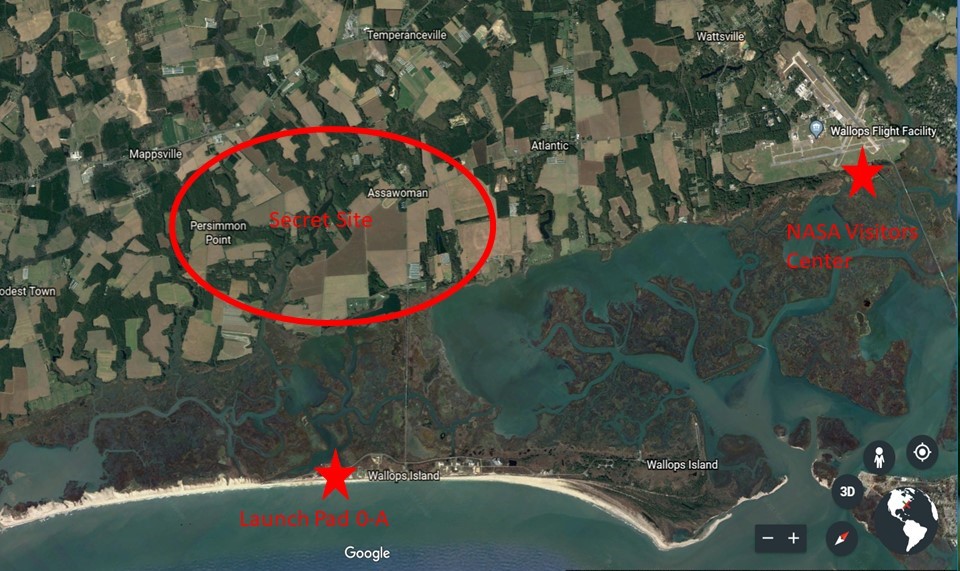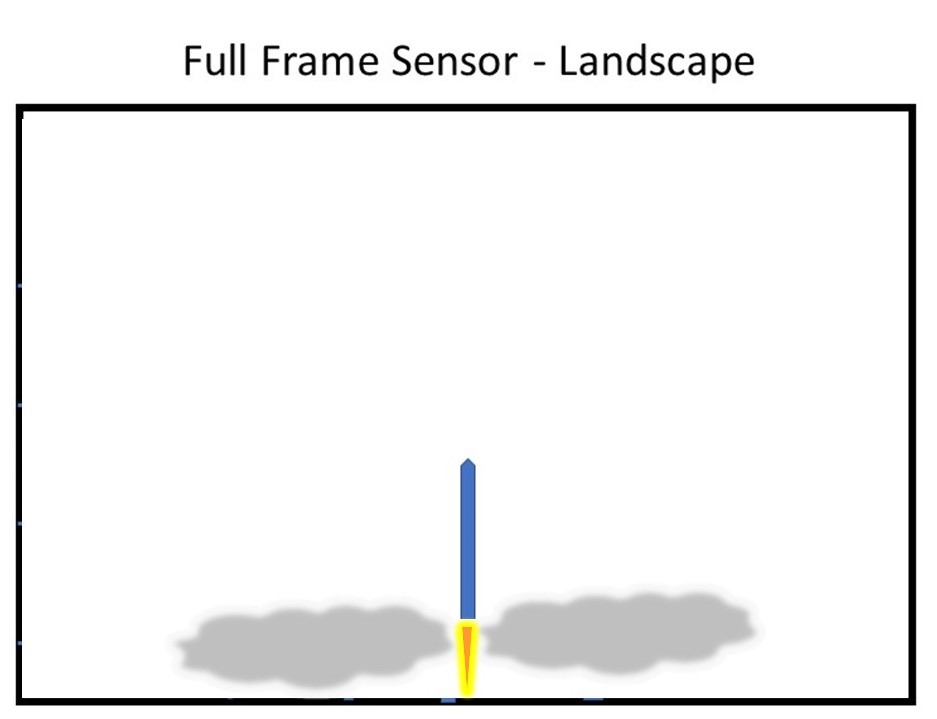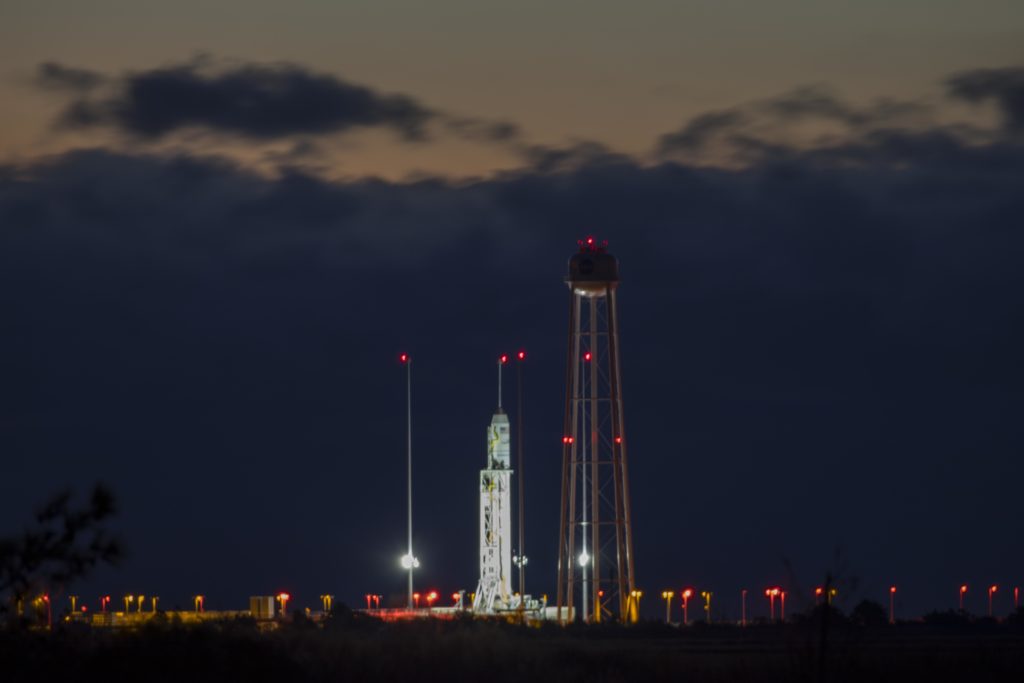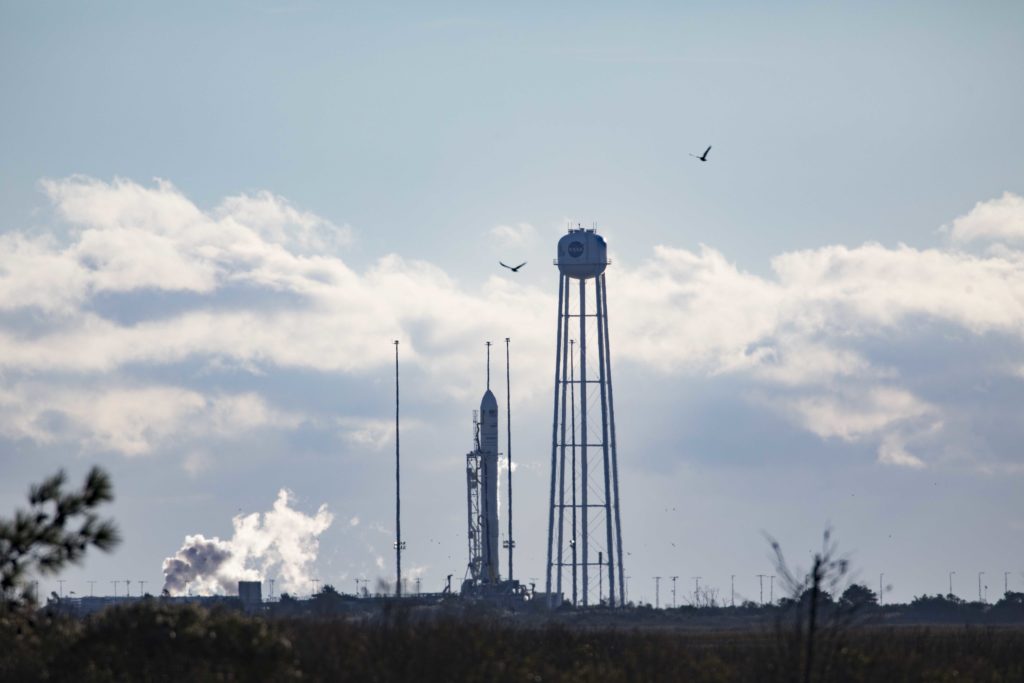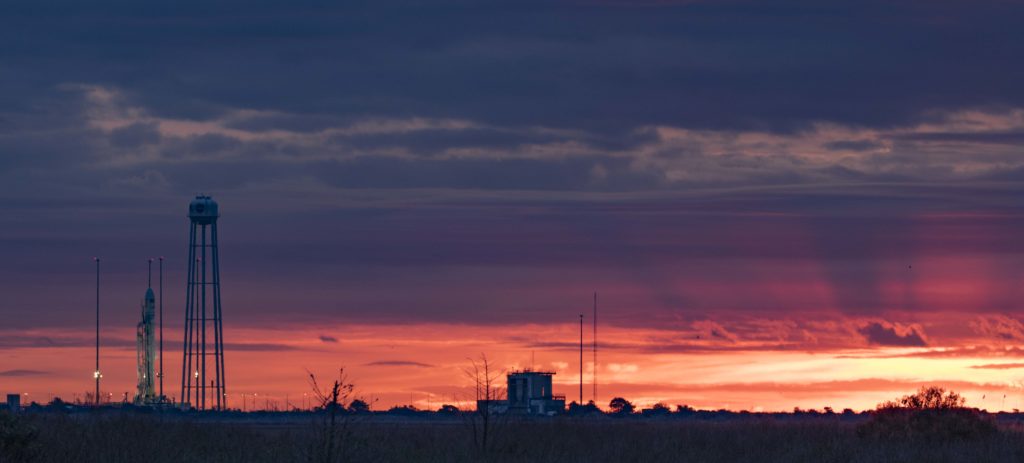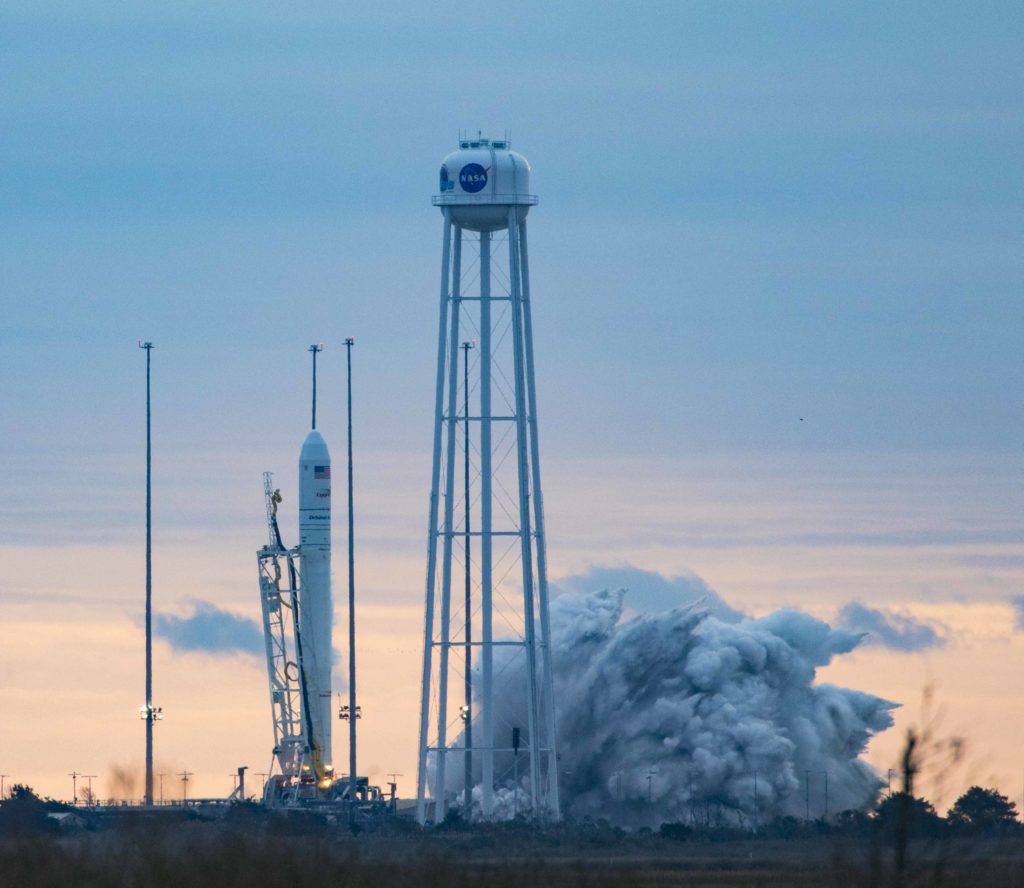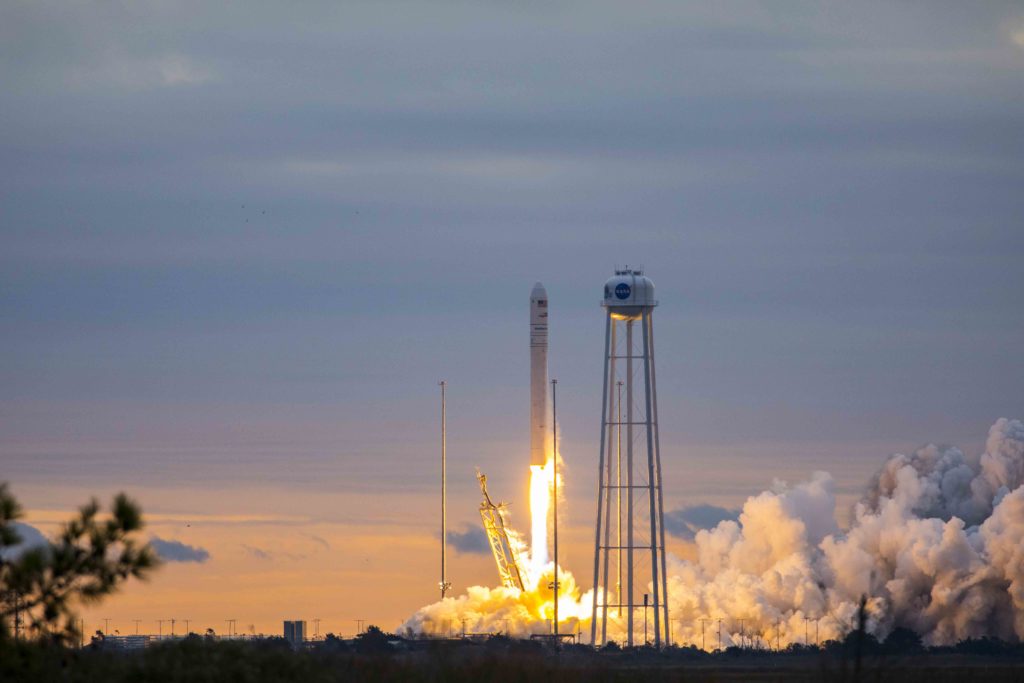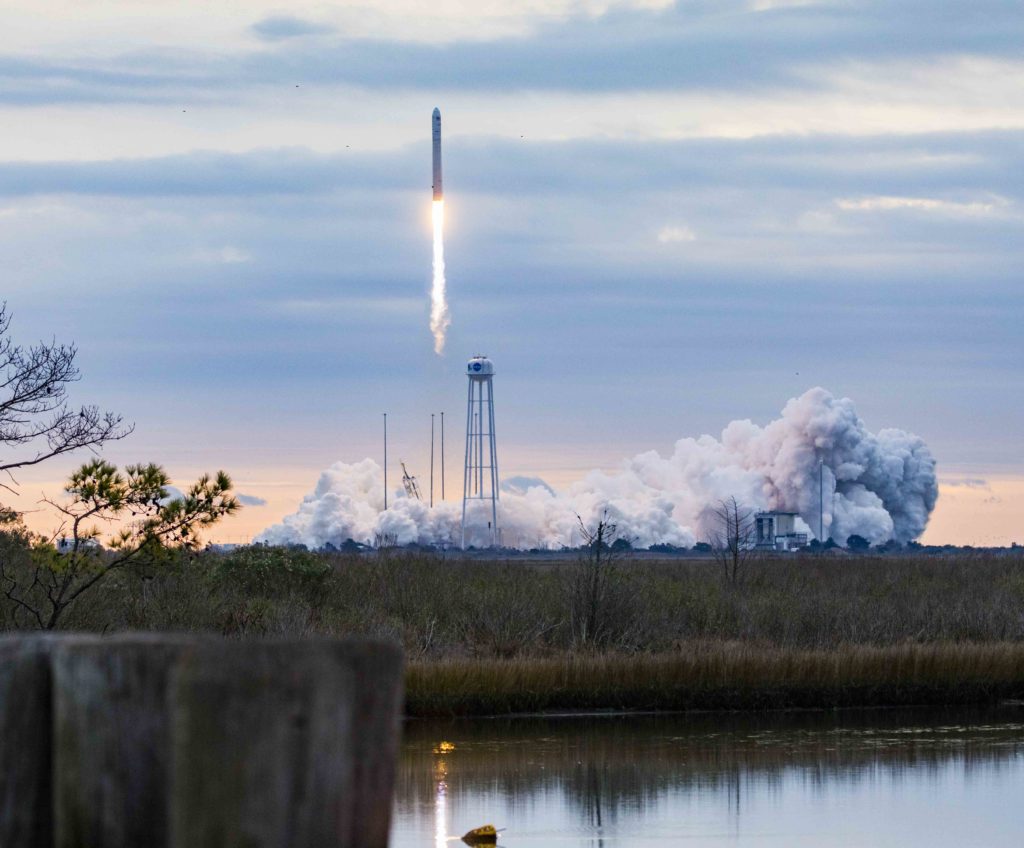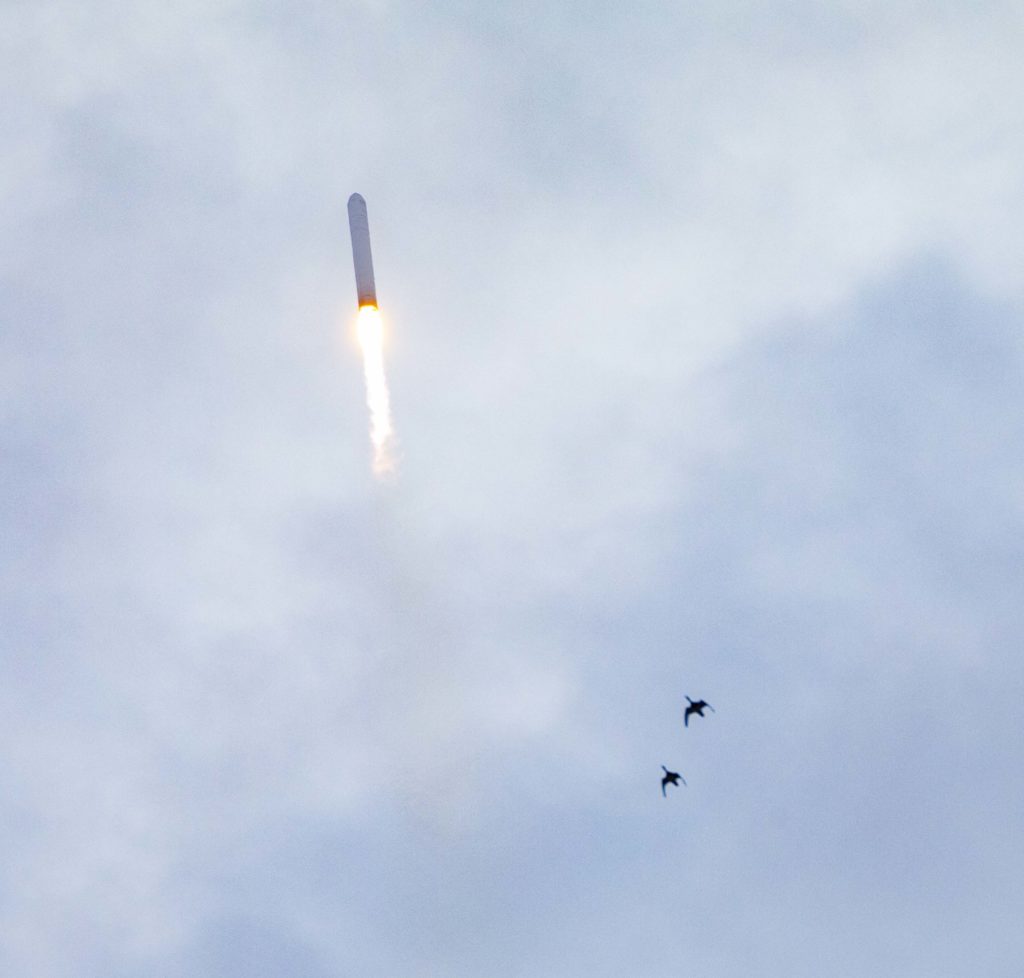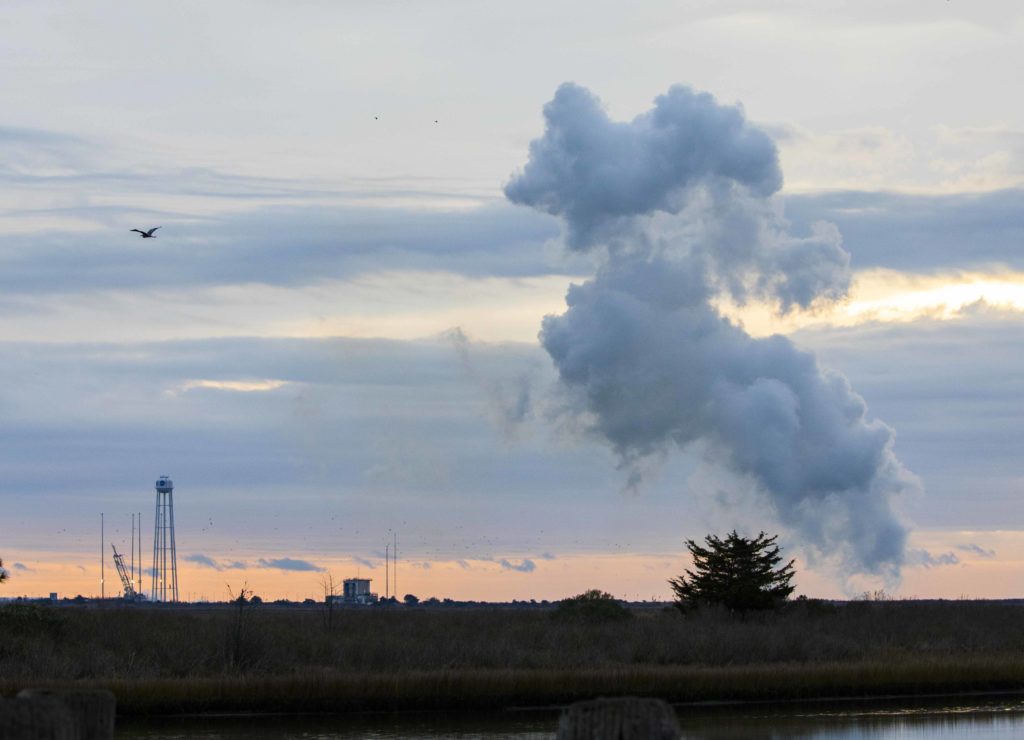Several of us (Michael and Laura Koren, Dave Mullen, and I) spotted a Meetup announcement by Road Runner Photography Tours to attend a NASA rocket launch at Wallops Island, Virginia on Saturday, November 11. This launch was to be an Antares rocket with a Cygnus spacecraft to resupply the International Space Station (ISS). I had always wanted to attend a large rocket launch, and this sounded perfect. Additionally, Road Runner would be continuing the trip after the launch to Chincoteague Island (basically the same location) for general photography.
The launch was scheduled for a launch window of 7:37-7:42 a.m. This narrow window reflects the challenge of intercepting the ISS as it passes by at more than 17,000 mph! NASA provides launch viewing at their Visitor Center, about four miles from the launch pad. There were warnings to get there three hours early, as it is usually very crowded (4:30 a.m., really?). The weather forecast was sunny, but very cold. Wind chills were expected to be in the low twenties. OK, so we’d be standing in the dark … for several hours … in the cold. Got it.
But, before we committed to vying with 10,000,000 other photographers at 4:30 a.m. at the Visitors’ Center, Michael talked to Aubrey Gemignani, our NASA photographer speaker (April 2017 Speaker – Aubrey Gemignani ). It pays to know people. While Aubrey always photographs the launches and, more importantly the VIP’s, from the Visitor Center, she recommended a closer location for us to get better photographs. It was a SECRET location in the back roads near there (I’m not allowed to say where, under pain of death). That sounded good, so we arranged to meet at 5:00 a.m. at a gas station store on Wallops Island, and caravan to the site before 5:30.
In the meantime, I had questions about the launch. I needed some basic data such as where is the launch pad? Where and when will the sunrise be, and where will the sun be at 7:37 a.m.? I knew this was a factor because I looked at a Google Maps and saw what appeared to be the prime launch pad, the NASA Visitors’ Center, and the area where the suggested site was:
An east-rising sun was going to be a potential issue from a location inside the marked ellipse (I don’t think that Aubrey will kill me for this approximation). There is a little compass needle on the bottom right of the map, with red indicating North. The ellipse is between East and North-East to the launch pad. I knew I needed my lens hood, at minimum, and needed to remove any filters from my lens to prevent flare from multiple glass elements.
I also checked PhotoPills, an application on my iPhone. PhotoPills is one of several such applications that allows you to plan a future activity with the sun, the moon, the Milky Way, or the planets. I found the photography site on its provided satellite map, and dropped a pin there. I changed the date and time to November 11, 7:37 a.m. and observed the sun angle, and its relationship to the direction to the pad. I scrolled back in time to determine sunrise (6:37 a.m.) and looked at the angle then. I could see that the sun at 7:37 a.m. was about 15 degrees from the pad, and probably not a show stopper.
I had decided to bring my full-frame Canon DSLR and a 100-400mm lens with a 1.4x teleconverter. That would get me out to 560mm equivalent. But, I wanted to know what I should expect with that. How big would the rocket be in my images? It wouldn’t be too hard to figure out, and it beats guessing. You can do the exactly same steps, say for Bald Eagles at Conowingo Dam, or any other subject that you can plan the details for ahead of time.
You might have to hunt around a bit in your browser to find what you need – I did. The mission data listed this rocket as an Antares 230 with the Cygnus spacecraft. I found this link with the relevant data: cygnus-s-s-gene-cernan-to-resupply-station.
If you would like to see how I estimated the predicted size of the rocket on my sensor, look at this link: read more It turns out that 560mm was just about perfect from the close-in SECRET site, but would have been too short from the Visitors’ Center for what I wanted. Here is a cartoon of what I expected:
On November 11 we all met as planned, and made our way to the site. Cars were parked in a makeshift lot, and all down the road at 5:30 a.m. It was dark. It was cold. We worked our way onto a little pier, and wormed our way into line with other photographers and their tripods, carefully stepping around the legs. People were lined up, multiples deep, on the bank of the waterway as well. Eventually, many dozens would be there. Lots of the people were NASA employees, excited about their mission. The rocket, by the way, was big and beautiful from this spot:
Over the next two hours we watched as the sun came up behind a wall of clouds, and the countdown hit 90 seconds. “OK! Here it goes!” … “What? ”
One of the photographers had a radio, and could hear the communications.
“It’s cancelled? A plane flew too close?” That plume on the left must be some fuel being purged. Now what?
It was to be rescheduled for the next day, 7:15 a.m. Unfortunately, Dave had plans for Sunday, and couldn’t stay. He headed off to Chincoteague to try for some ponies. Michael, Laura, and I decided to find a hotel, and try again the next morning. Hotels were booked up for Veterans’ Day weekend (November at the beach! ), but we located some rooms in Ocean City, an hour away. We spent the day there, having fun on the boardwalk. When life gives you lemons, eat fries and ice cream, and play Skee-Ball!
The next day, at 3:45 a.m. (yes, 3:45 a.m. – photography is a harsh mistress) we headed back to the Wallops SECRET site. It was a bit less crowded than the day before. It was a few degrees warmer too. This time there were fewer clouds blocking the sunrise – the sun was not a problem! We saw some nice crepuscular rays (as Michael informed us).
And finally, on time, we had ignition! The gantry swung away, and about ten seconds later the wall of sound slammed into us. The engine was really too bright to look at once it started climbing.
And just before it disappears into the clouds:
And then the party was over …
This all happened very quickly. It wasn’t like a Saturn V Apollo launch, where you could be into your second cup of coffee by the time it cleared the tower. This was fast! I was opening my zoom in seconds, and then trying to get my camera out of it’s quick release clamp as fast as I could. Lesson: next time use a Wimberley-style gimbal mount (Movo is an inexpensive brand) so that I don’t have to fumble with a ballhead knob and quick release clamp.
I’m looking forward to the next one – the experience was a blast!

